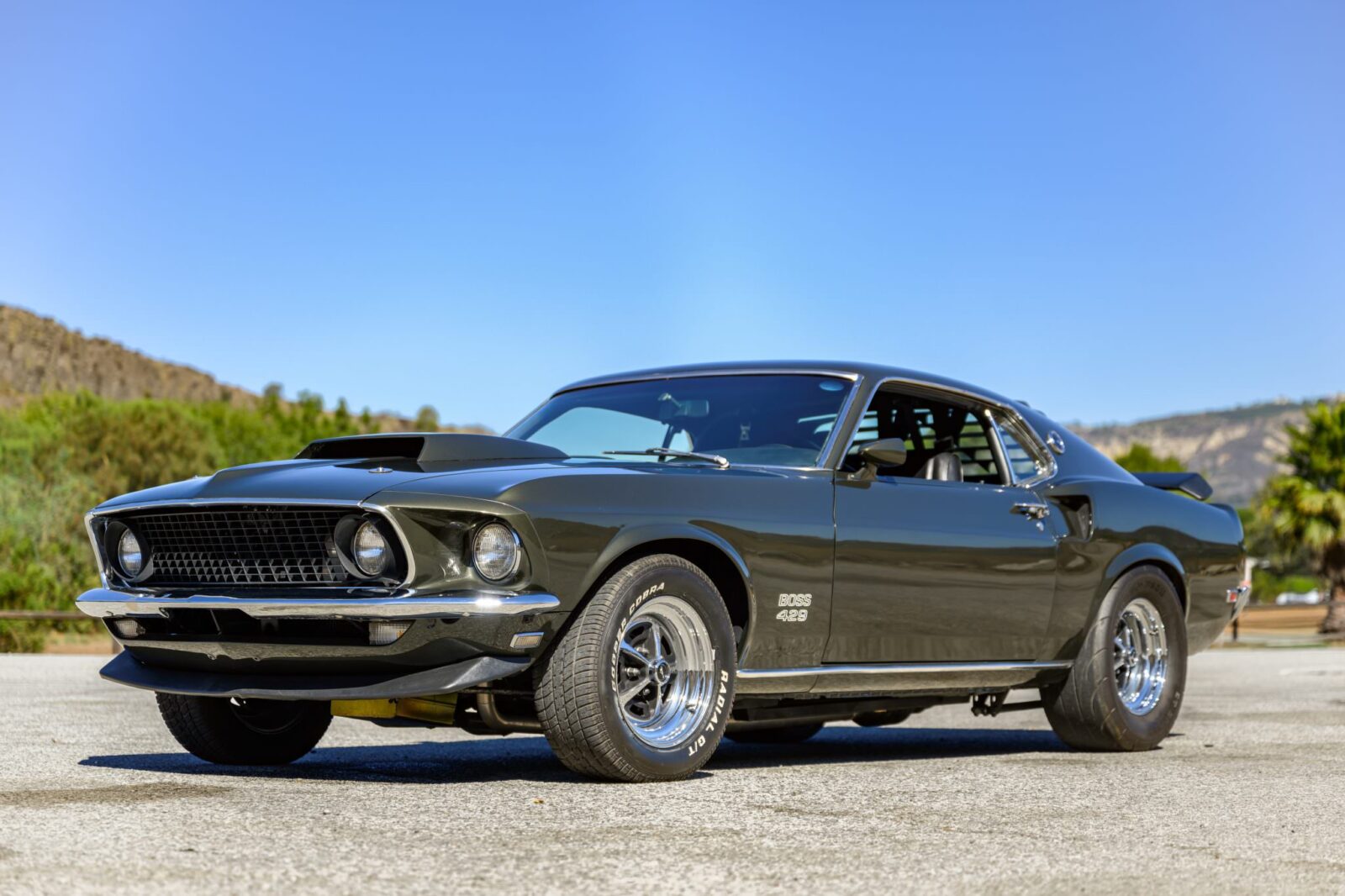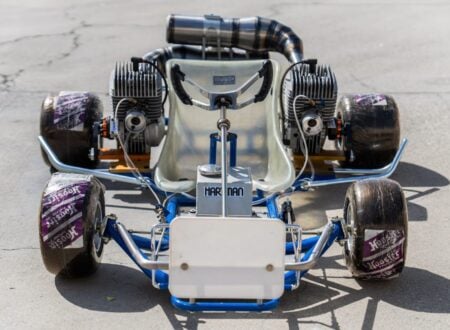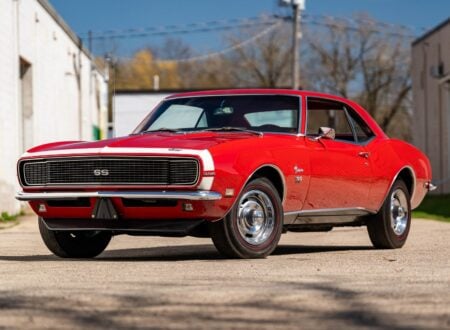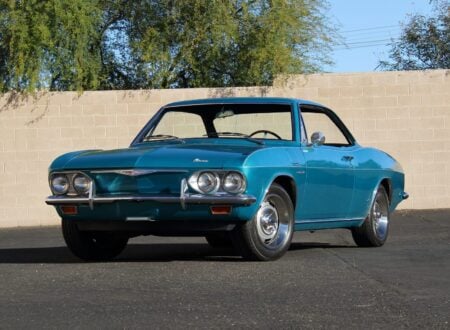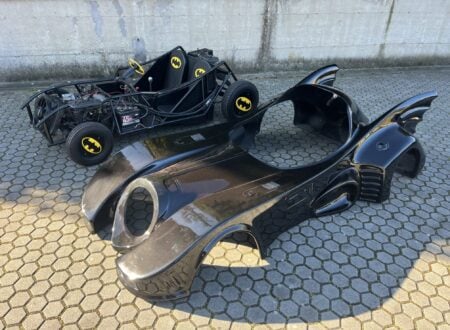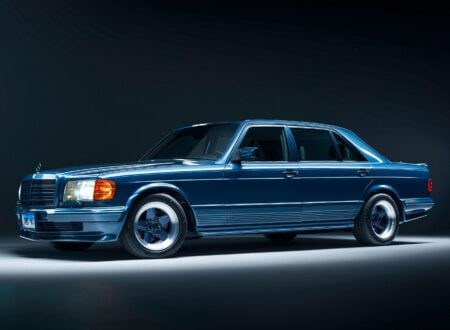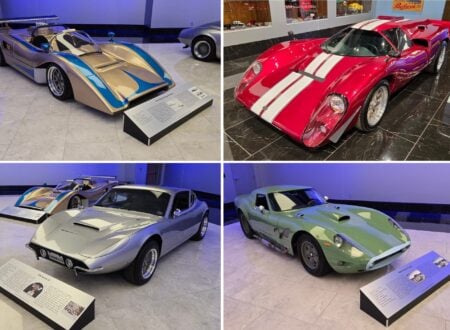This is a 1969 Ford Mustang Boss 429 that was fitted with a 9.8 liter Kaase 598 V8 that’s been dyno tested and shown to be making 1,062 bhp and 817 lb ft of torque.
These power figures make it by far the most powerful Mustang we’ve ever featured here on Silodrome, and it’s also one of the most powerful street legal Mustangs in California, if not the country as a whole.
Fast Facts: A Kaase 598 Mustang Boss 429
- This 1969 Ford Mustang Boss 429, originally one of about 850 built that year, has been transformed into a street-legal powerhouse through a Kaase Racing Engines 598 cubic inch V8 swap. The engine delivers a dyno-verified output of 1,062 bhp and 817 lb ft of torque, dwarfing the factory 429’s factory power rating.
- Completed on May 20, 1969, and designated Kar Kraft #1837, the car was first delivered to Phil Long Ford in Colorado Springs. In 2018, it underwent its major repower and now features a Ford Motorsport block, 15:1 compression, Get’M Garage 1,650 cfm carburetor, Hedman headers, and MSD 7AL ignition, paired with a McLeod twin-disc clutch and carbon-fiber driveshaft.
- Externally, it retains its period Black Jade finish, Boss 429 badging, functional hood scoop, and rear window louvers, complemented by 15-inch Magnum 500-style wheels and Mickey Thompson drag radials. The suspension was upgraded with Calvert Racing springs, while stopping power is provided by front discs and rear drums – keeping the car’s vintage character but meaning the owner will need to be on the ball.
- Inside, the cabin blends period-correct details like black vinyl bucket seats, woodgrain appliqués, and an AM/FM radio with modern driver-focused additions. An Auto Meter tachometer, auxiliary gauges, and choke control provide a series of practical upgrades.
History Speedrun: The Ford Mustang Boss 429
When Ford unveiled the Boss 429 Mustang in 1969 it wasn’t meant as a mass-produced muscle car in the conventional sense. Instead, it was a homologation project – an engineering workaround to meet NASCAR’s requirement that racing engines be production-based. The car was essentially a Trojan horse – a street-legal Mustang built to sneak Ford’s new 429 cubic inch semi-hemi V8 past sanctioning bodies and onto the high-banked ovals of top flight NASCAR competition.
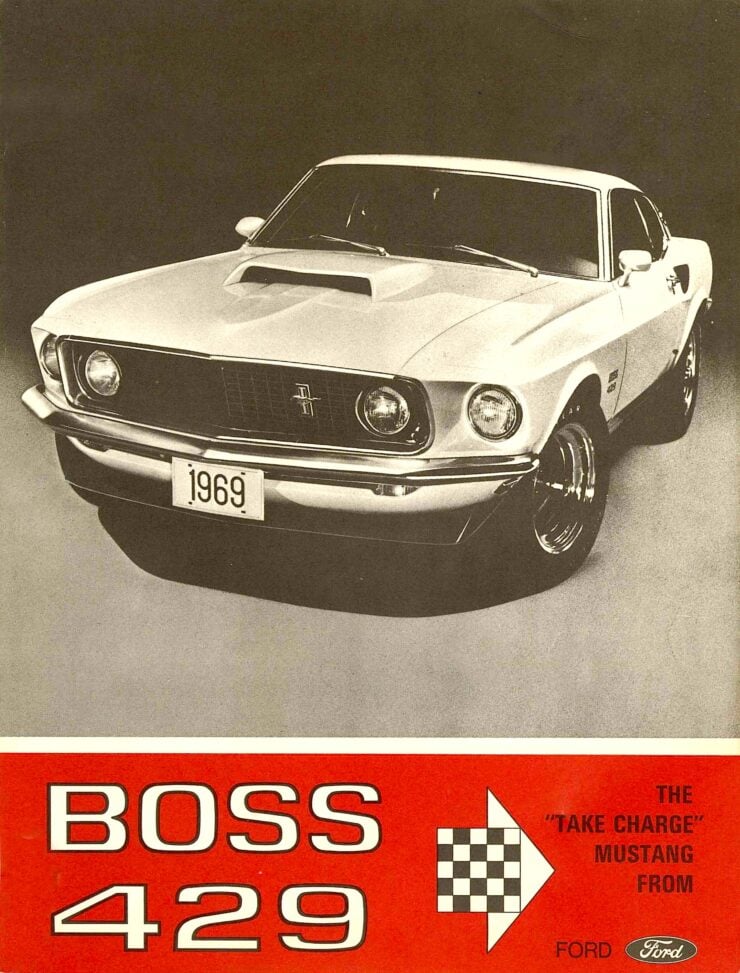

By the late 1960s, Ford was in a horsepower war on two fronts – the muscle car street scene and the NASCAR tracks where Chrysler’s 426 Hemi was dominating. To counter Mopar, Ford’s engineers developed a new big-block designed with hemispherical combustion chambers, massive cylinder heads, and the breathing capacity needed for sustained 7,000 rpm durability – that’s no small feat for a big block pushrod V8.
NASCAR homologation rules required that at least 500 street cars be produced with the new engine and the Mustang fastback was chosen as the host platform – not because it was the best fit but because Ford wanted the Mustang name associated with its latest on-track weapon.
The engine bay of a stock Mustang couldn’t accommodate the Boss 429, so Ford farmed the conversions out to Kar-Kraft, a specialty contractor in Brighton, Michigan, already known for its work on racing Fords including the legendary Le Mans-dominating Ford GT40.
Kar-Kraft re-engineered the front end of the Mustang to accept the oversized V8. This meant widening the shock towers, relocating the battery to the trunk, and revising the front suspension geometry. These changes shifted the car’s balance and made it less nimble on the street. But cornering and handling wasn’t the point – getting the Boss 429 engine onto the track was.
Where did the name “Boss” come from?
The “Boss” name came from Ford designer Larry Shinoda, who had recently arrived from GM. When asked by colleagues what the secretive project he was working on was, Shinoda would jokingly say, “the boss’s car,” a reference to his boss Bunkie Knudsen, Ford’s recently hired president. The moniker stuck, first with the Boss 302 and then with the Boss 429.
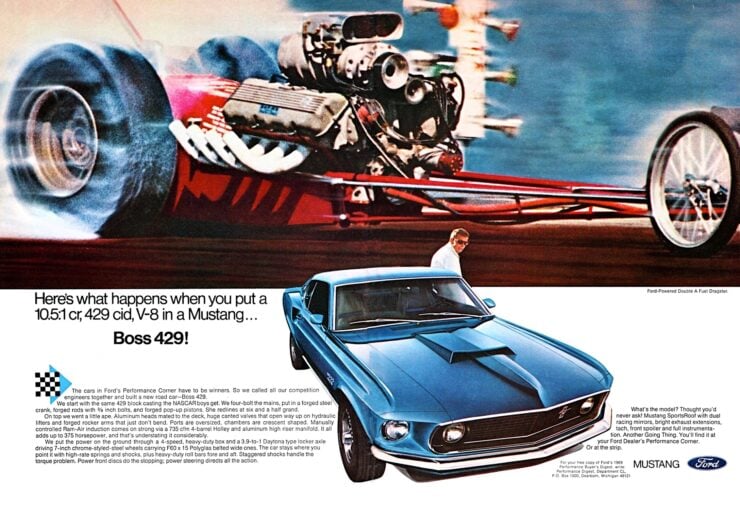

The Boss 429 Mustang made its debut in 1969 – instead of wild graphics or spoilers, it had relatively understated “Boss 429” decals on the front fenders, a functional hood scoop, and Magnum 500 wheels. Inside, it was much like a standard Mustang, though all examples came with a 4-speed manual gearbox and a 3.91 rear axle ratio.
Ford produced 859 Boss 429s in 1969, painted in a mix of Grabber colors and some more subdued hues. In 1970, the car returned with minor cosmetic revisions, including the new front-end design shared by the rest of the Mustang lineup. Only 499 were built for that model year, making the total production run just 1,358 units.
The Boss 429 V8 Engine
The heart of the car, the Boss 429 V8 mill, was a marvel of late-1960s engineering. With a 4.36 inch bore and 3.59 inch stroke, it displaced 429 cubic inches (7.0 liters). The aluminum cylinder heads used crescent-shaped combustion chambers, paired with large valves and high-flow ports. Officially, Ford rated the engine at 375 bhp at 5,200 rpm and 450 lb ft of torque but in reality, it produced much more – closer to 500 bhp in street trim and well over 600 in NASCAR-spec.
The Boss 429 lasted only two model years. Rising insurance premiums, tighter emissions regulations, and changing market conditions spelled the end of Ford’s homologation special. By 1971, the Mustang itself had grown in size and weight, and the big-block performance era was already on borrowed time.
The Boss 429 name didn’t officially return in production Mustangs after 1970, though its legend only grew. In the decades since, Ford has periodically revived the “Boss” branding. The Boss 302 returned in 2012 to 2013 as a modern track-focused Mustang, while custom builders like Classic Recreations have offered officially licensed continuation Boss 429s using new Ford crate engines.
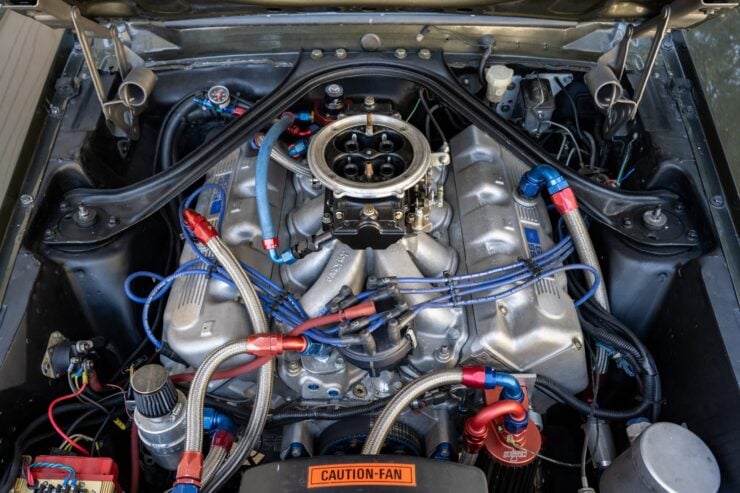

The Kaase 598-Powered 1969 Boss 429 Shown Here
This 1969 Ford Mustang Boss 429 is one of roughly 850 examples built for the model year – it was completed on May the 20th, 1969 and assigned Kar Kraft number #1837 before being delivered new to Phil Long Ford in Colorado Springs.
It’s since been significantly modified, most notably in 2018 when it was repowered with a Kaase Racing Engines 598 cubic inch (9.8 liter) V8. The car now produces a dyno-verified 1,062 bhp, making it far more powerful than its original 429 V8 which was officially rated at 375 bhp.
Finished in Black Jade with Boss 429 badging, a functional hood scoop, and rear window louvers, the car keeps its period-correct road presence while now incorporating an array of modern performance upgrades. It rides on 15 inch Magnum 500-style wheels with Cooper tires up front and Mickey Thompson drag radials at the rear. It rides on Calvert Racing springs and braking is managed by factory-style front discs and rear drums.
Inside, the cabin has black vinyl high-back bucket seats, a matching rear bench, and woodgrain appliqués on the dash, console, and door panels. Additional amenities include a period-correct heater and an AM/FM radio. Newer, driver-focused upgrades include an Auto Meter tachometer, auxiliary gauges, and a choke control bracketed above the accelerator. The five-digit odometer shows 62,000 miles, with only about 20 miles added under current ownership.
The Kaase-built 598 V8 sits very much at the center of the car’s transformation, it has a Ford Motorsport block, a 15:1 compression ratio, a Get’M Garage 1,650 cfm carburetor, Hedman headers, and an MSD 7AL ignition.
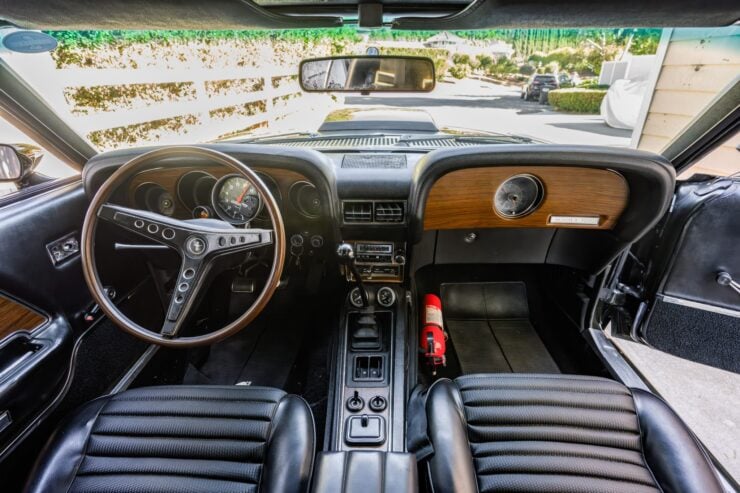

Power is delivered through a 4-speed manual transmission paired with a McLeod twin-disc clutch and carbon-fiber driveshaft, feeding a Traction-Lok differential with 4.11:1 gears and 35-spline axles.
The car is now being offered for sale out of Camarillo, California with a clean California title. If you’d like to read more about it or place a bid you can visit the listing here.
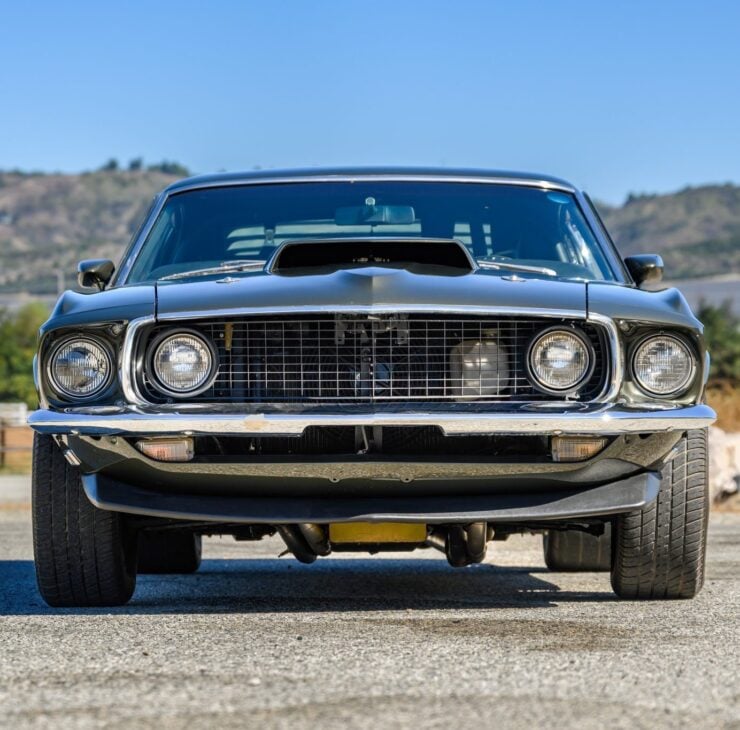
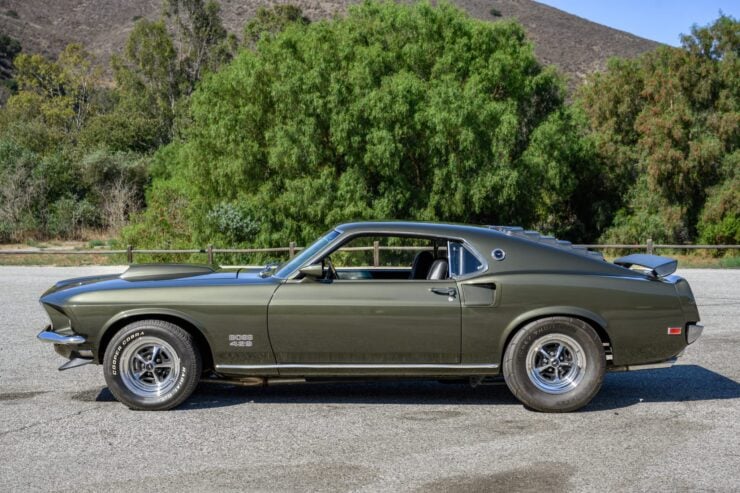
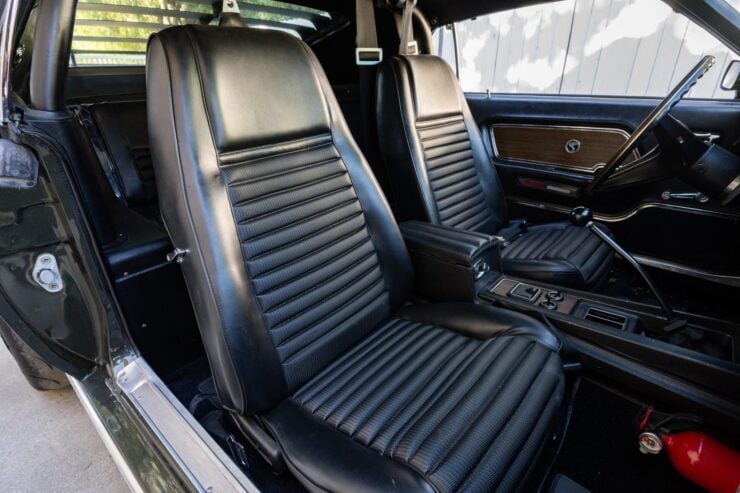
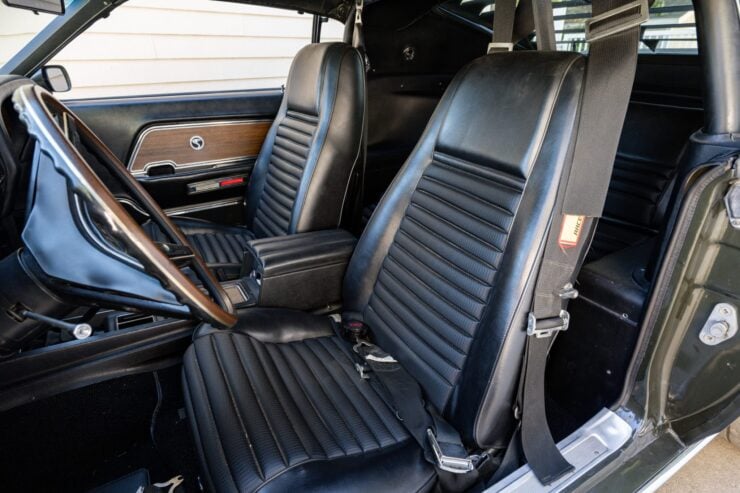
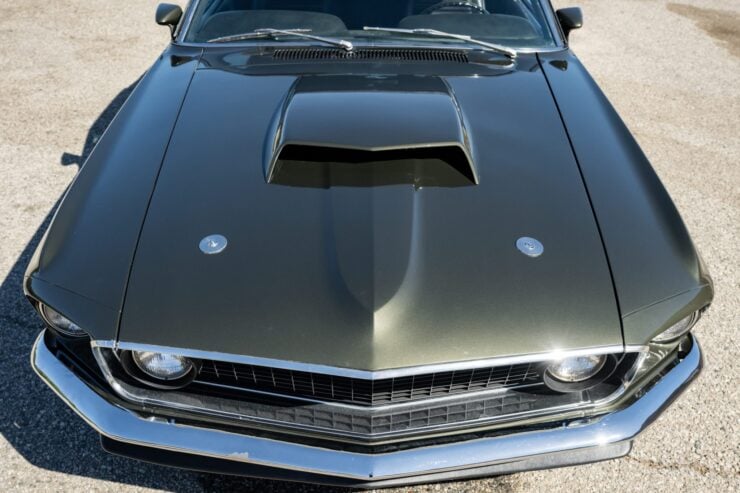
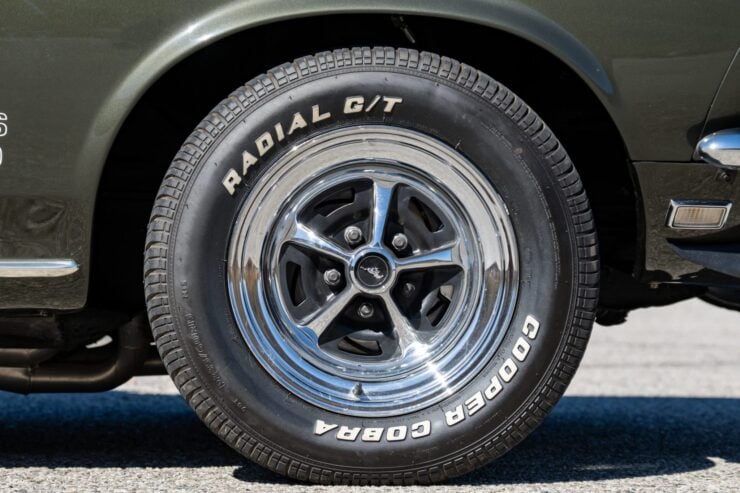
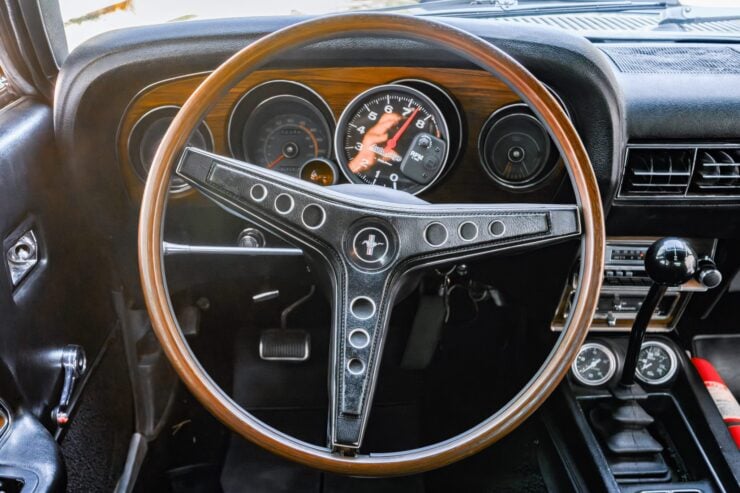
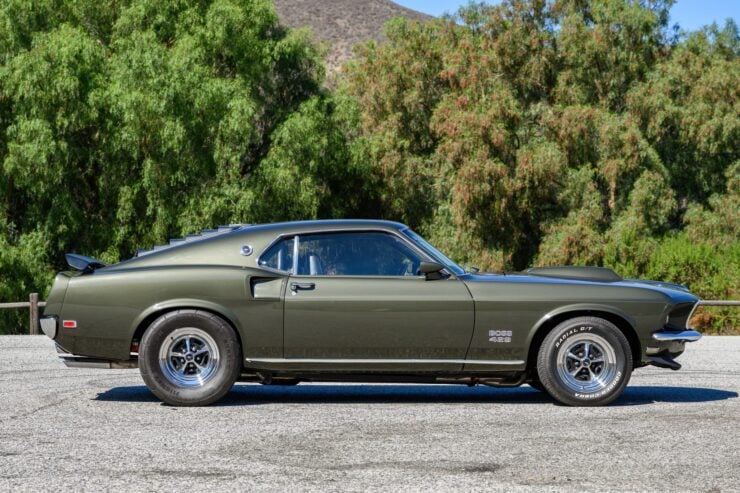
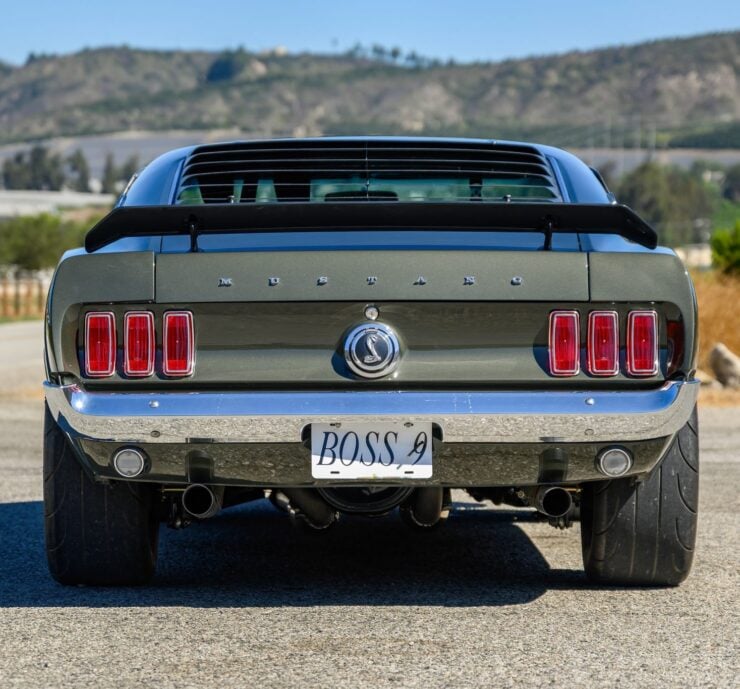
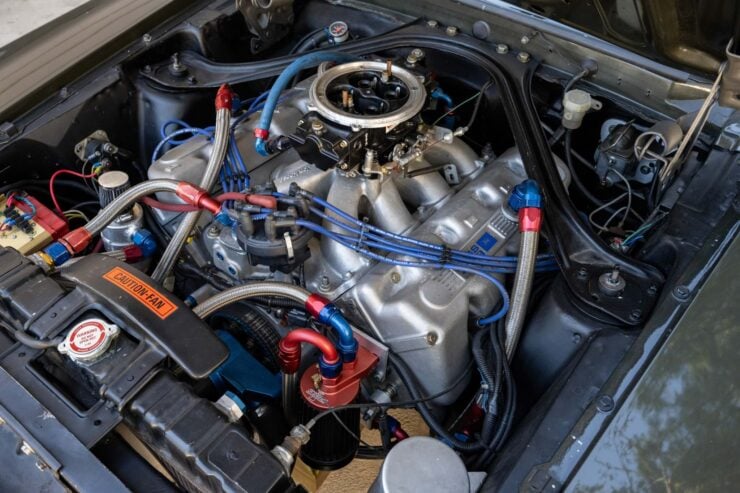
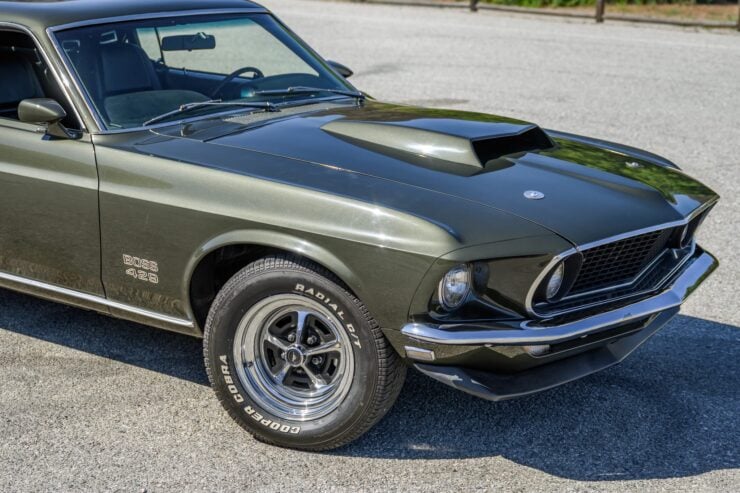
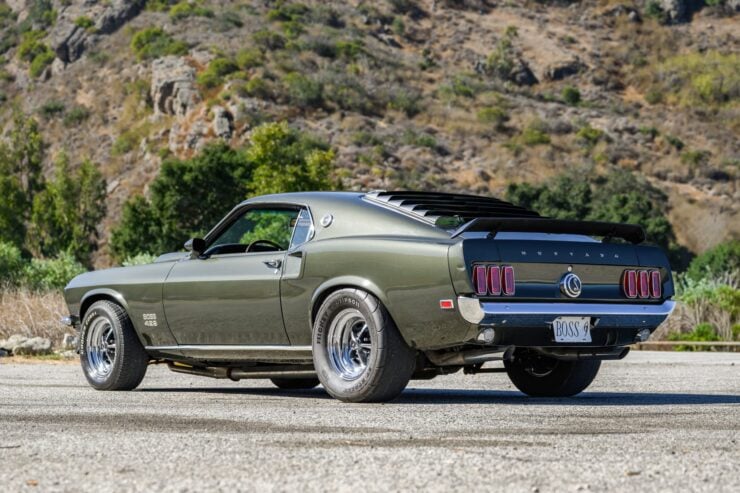
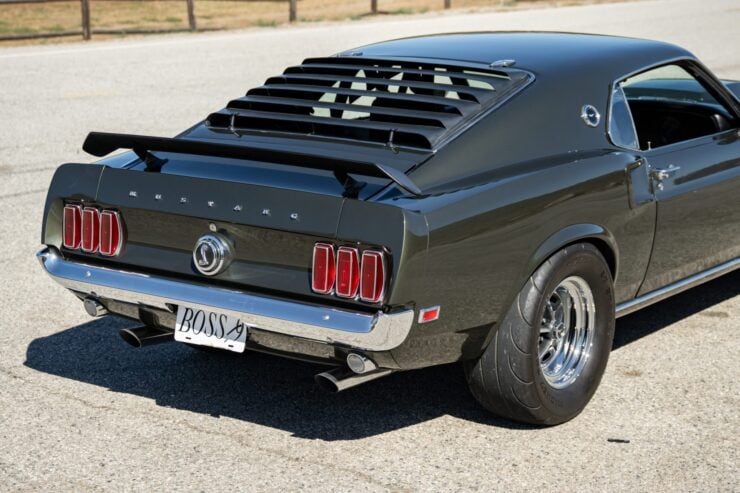
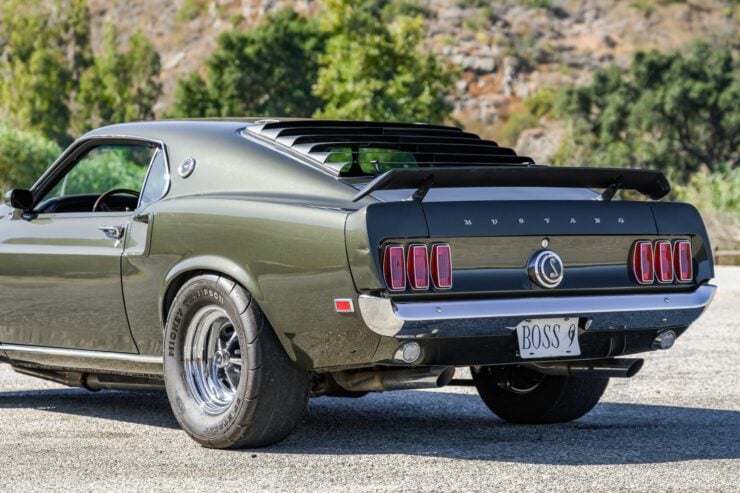
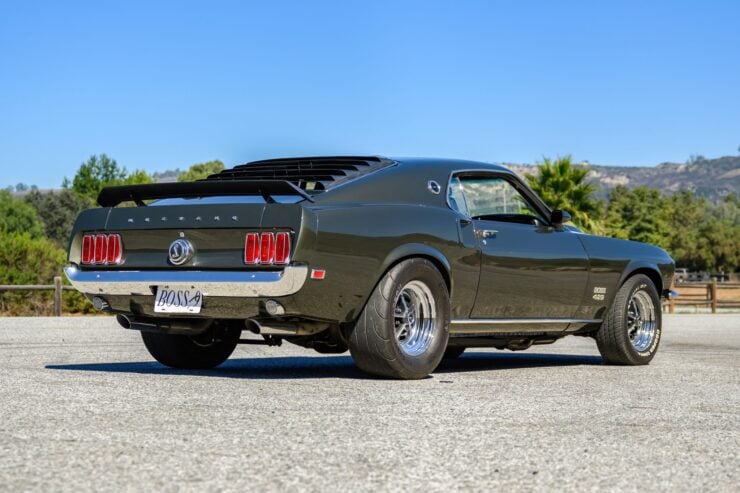
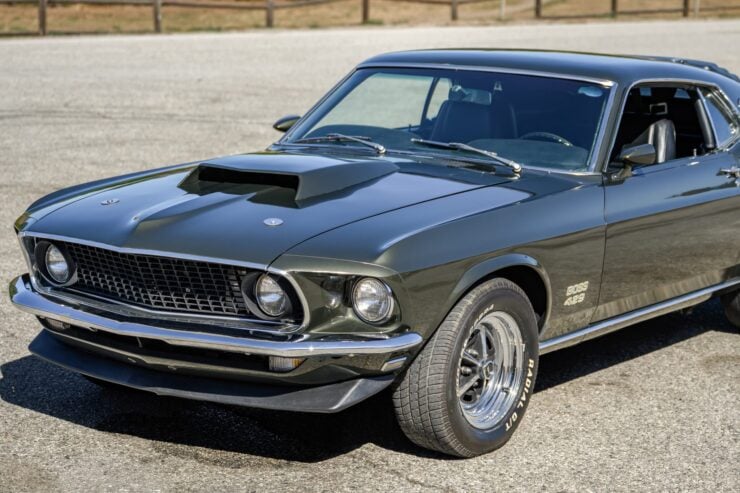
Images courtesy of Bring a Trailer

